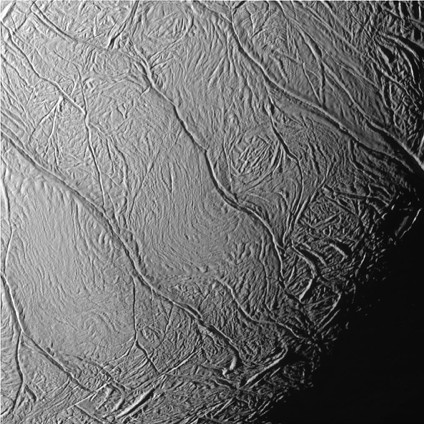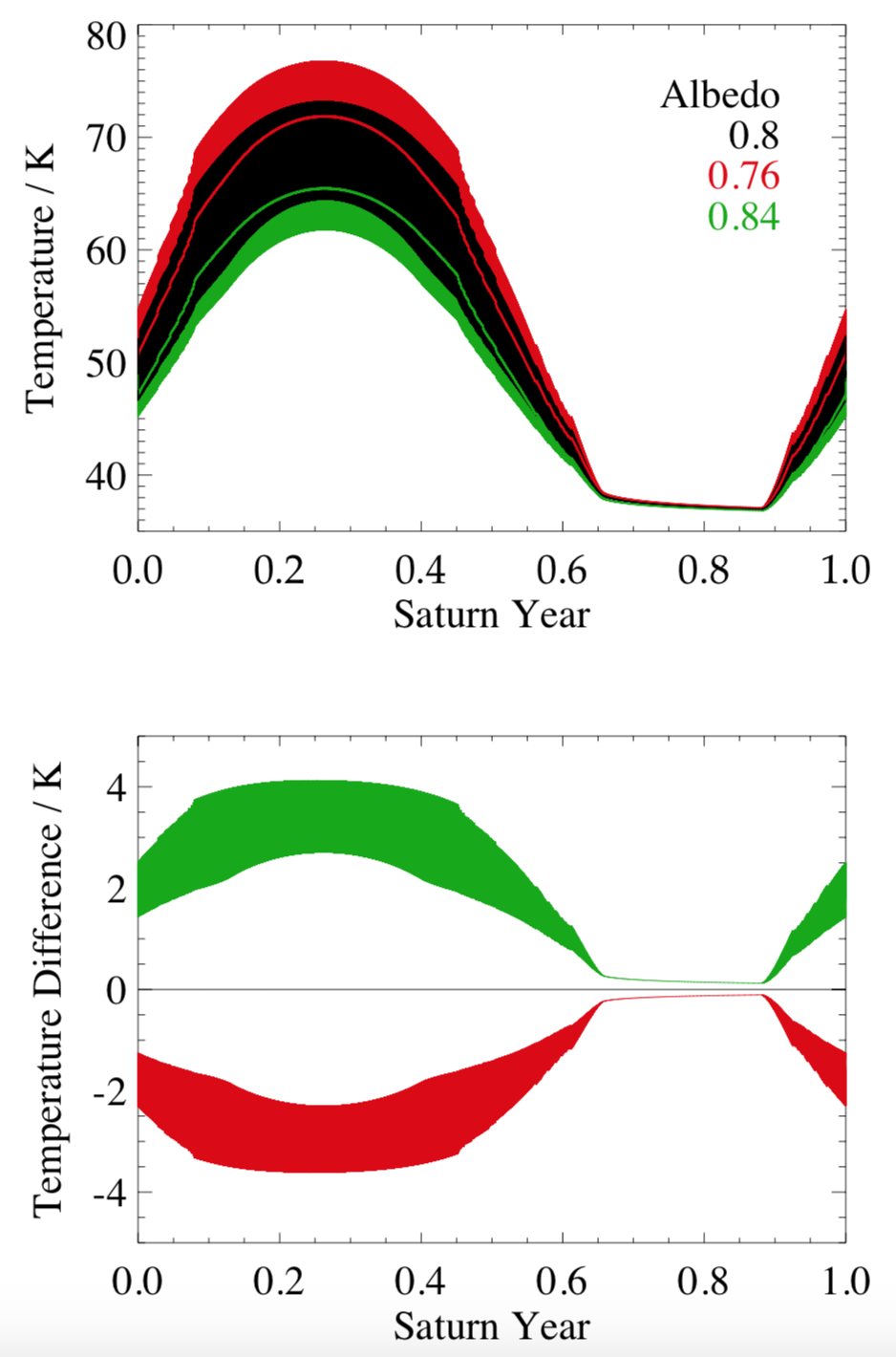Hot Stuff: Looking for new endogenic heat sources on Enceladus
- 1SwRI Affiliate, Riehen, Switzerland (georgina.miles@gmail.com)
- 2SwRI, Boulder, USA
- 3Department of Physics, University of Oxford, UK
The south polar region of Enceladus is a source of endogenic heat and plumes, as discovered using observations by Cassini instruments (e.g. Spencer et al. 2006). They comprise four long fissures or ‘Tiger Stripes’ which exude considerable thermal power; the total heat flow is likely between 4.2 GW (Spencer et al., 2018) and 15.8 ± 3.1 GW, Howett et al. (2011) and are shown in Figure 1. Identifying further endogenic heat sources on Enceladus would have implications for understanding the tidal heat budget and evolution of the surface geology. We use observations from Cassini’s Composite Infrared Spectrometer (CIRS) to survey the non-south polar regions of Enceladus in an attempt to both identify other low-level endogenic heat sources and to assess the limits of the observations for the detection of such sources. There are limitations to the observations, namely that detection is easier under conditions that correspond to lower signal to noise for the CIRS detectors. We use a thermal surface model to characterize expected surface temperatures – to determine what surface temperatures would be deemed anomalous. Uncertainties in albedo and thermal inertia which strongly impact the modeled temperature distribution, are themselves subject to a range of uncertainty. Model and observation uncertainty therefore contribute to a range of temperatures (a function of time of day and time of year) where measurement/model temperature differences are not deemed significant, and we propose the limits above which observations may be considered as plausible candidates for endogenic heat sources outside the south polar terrain. Using a perturbation study, we explore the bounds of model uncertainty that arise due to limited constraint of surface thermal properties. For illustration, Figure 2 shows a potential temperature range as modeled by a 1-D surface thermal model (thermprojrs (Spencer 1989, Howett et al., 2010)) for surface temperatures that can arise from the uncertainties just in albedo at this latitude. In this case model uses a constant value for thermal inertia of 18 J m-2 K-1 s-1/2, at a specimen latitude of 70°N, latitude 0°W. The impact is dependent upon time of year/insolation and at its peak it has a range of nearly 8 K during northern hemisphere summer. This would indicate that for comparison with CIRS observations at this latitude and time of year, only CIRS scene temperatures greater than this (and greater than the observed temperature error) could be considered as potentially significant.

Figure 1: “Tiger Stripes” as imaged by Cassini, long fissures on Enceladus’ south polar terrain, that are significant sources of endogenic heat (50-80 K hotter than would otherwise be the case) as well as cryovolcanic plumes, predominantly composed of water ice. (image credit NASA/JPL/Space Science Institute - http://photojournal.jpl.nasa.gov/catalog/PIA06247)

Figure 2: Top Panel – Enceladus seasonal temperatures at a latitude of 70°N/0°W for a range of albedos representing the current uncertainty in bolometric Bond albedo (derived by Howett et al. 2010)). Diurnal range is indicated by the spread of values with daily mean by thin line over-plotted. Bottom Panel – temperature difference from nominal (albedo 0.8). One Saturn year is approximately 29.46 Earth years.
References:
Howett, C.J.A., Spencer, J. R., Pearl, T., Segura, M.2010. Thermal inertia and bolometric Bond albedo values for Mimas, Enceladus, Tethys, Dione, Rhea and Iapetus as derived from Cassini/CIRS measurements. Icarus 206, 2, pp573-593. https://doi.org/10.1016/j.icarus.2009.07.016
Howett, C. J. A., J. R. Spencer, J. Pearl, and M. Segura (2011), High heat flow from Enceladus’ south polar regionmeasured using 10–600 cm−1 Cassini/CIRS data, J. Geophys. Res., 116, E03003, doi:10.1029/2010JE003718.
Spencer, J.R. F. Nimmo, A.P. Ingersoll, T.A. Hurford, E.S. Kite, A.R. Rhoden, J. Schmidt and C.J.A. Howett, Plume Origins and Plumbing: From Ocean to Surface, In Enceladus and the Icy Moons of Saturn, University of Arizona Press, Editors P.M. Schenk, R.N. Clark, C.J.A. Howett, A.J. Verbiscer and J.H. Waite, 2018.
How to cite: Miles, G. and Howett, C.: Hot Stuff: Looking for new endogenic heat sources on Enceladus, European Planetary Science Congress 2021, online, 13–24 Sep 2021, EPSC2021-366, https://doi.org/10.5194/epsc2021-366, 2021.

